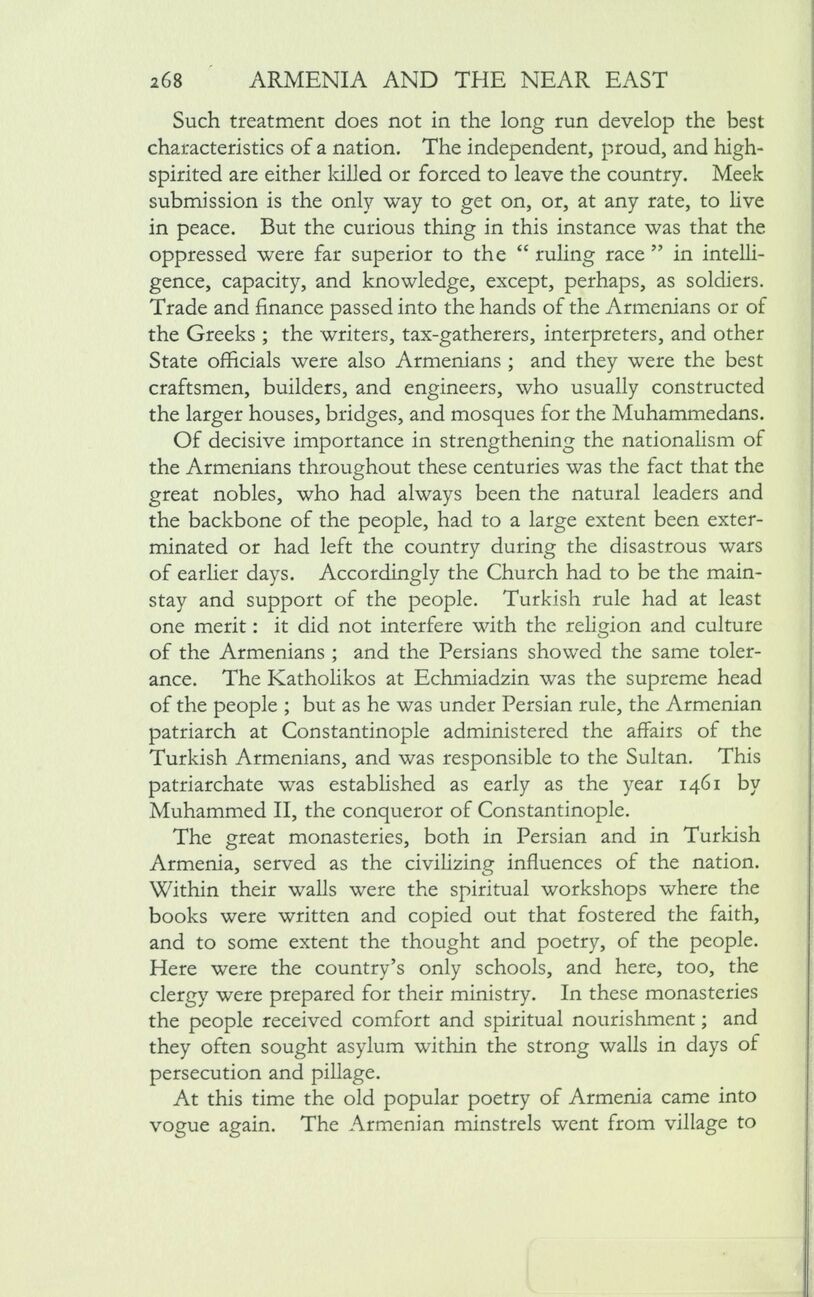
Full resolution (JPEG) - On this page / på denna sida - X. Chapters in the history of Armenia

<< prev. page << föreg. sida << >> nästa sida >> next page >>
Below is the raw OCR text
from the above scanned image.
Do you see an error? Proofread the page now!
Här nedan syns maskintolkade texten från faksimilbilden ovan.
Ser du något fel? Korrekturläs sidan nu!
This page has never been proofread. / Denna sida har aldrig korrekturlästs.
268 ARMENIA AND THE NEAR EAST
Such treatment does not in the long run develop the best
characteristics of a nation. The independent, proud, and high
spirited are either killed or forced to leave the country. Meek
submission is the only way to get on, or, at any rate, to live
in peace. But the curious thing in this instance was that the
oppressed were far superior to the " ruling race " in intelli
gence, capacity, and knowledge, except, perhaps, as soldiers.
Trade and finance passed into the hands of the Armenians or of
the Greeks ; the writers, tax-gatherers, interpreters, and other
State officials were also Armenians ; and they were the best
craftsmen, builders, and engineers, who usually constructed
the larger houses, bridges, and mosques for the Muhammedans.
Of decisive importance in strengthening the nationalism of
the Armenians throughout these centuries was the fact that the
great nobles, who had always been the natural leaders and
the backbone of the people, had to a large extent been exter
minated or had left the country during the disastrous wars
of earlier days. Accordingly the Church had to be the main
stay and support of the people. Turkish rule had at least
one merit : it did not interfere with the religion and culture
of the Armenians ; and the Persians showed the same toler
ance. The Katholikos at Echmiadzin was the supreme head
of the people ; but as he was under Persian rule, the Armenian
patriarch at Constantinople administered the affairs of the
Turkish Armenians, and was responsible to the Sultan. This
patriarchate was established as early as the year 1461 by
Muhammed 11, the conqueror of Constantinople.
The great monasteries, both in Persian and in Turkish
Armenia, served as the civilizing influences of the nation.
Within their walls were the spiritual workshops where the
books were written and copied out that fostered the faith,
and to some extent the thought and poetry, of the people.
Here were the country’s only schools, and here, too, the
clergy were prepared for their ministry. In these monasteries
the people received comfort and spiritual nourishment ; and
they often sought asylum within the strong walls in days of
persecution and pillage.
At this time the old popular poetry of Armenia came into
vogue again. The Armenian minstrels went from village to
<< prev. page << föreg. sida << >> nästa sida >> next page >>